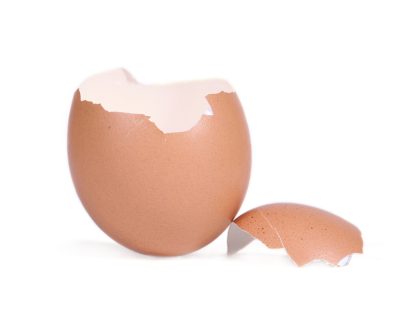Silly question? An egg may cost very little compared to a work of art, though without doubt it is a nutritional gem contained in a perfectly designed sustainable package! But eggs and arts also have much more in common. In fact, the history of art has been very much “written” by eggs. And the art market also shows how value creation works for objects that are not even edible.
Imagine you are holding a real diamond or a gold nugget in your hand! Of course, you and everybody else around you would immediately know that you have something extremely valuable there! Or imagine a real painting by Leonardo Da Vinci, van Gogh or Picasso hanging in your living room—extremely valuable. But what is it about value that makes it, well, valuable?
And what has all this to do with the production of layer birds and eggs, and marketing and communication…? The short answer we suggest here is this:
Value is created by communication about it! Telling is selling!
 Communication creates value
Communication creates value
An object you and everybody else are unaware of can hardly be of any value. Even known values are still debatable. Although the price of gold is a global financial indicator, gold is not edible and would be utterly worthless if there was no more food to buy on the planet!
Let us take a brief trip into how the art market creates and defines values, and then see whether there are any parallels to draw.
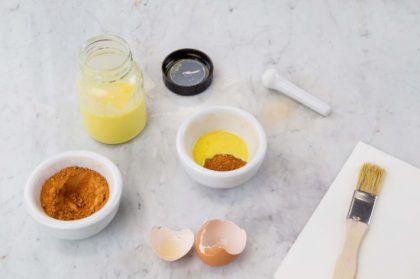
From usual to unique, from unique to ubiquitously known
Da Vinci’s Mona Lisa, dating back to the beginning of the 16th century, and van Gogh’s Sunflowers from 1888 have been painted in very different styles. Both are unique pieces or art, despite countless legal and illegal reproductions, photographs, posters, postcards, fan art etc. drawn based on them.
Did you know that eggs are indeed part of art?
And a very crucial part, since for many centuries artists preferred a paint called egg tempera. Egg tempera in essence consists of powdered pigments with a little water and egg yolk that serves as binding agent to literally hold the painting together—and preserve it down the centuries! Painters like Giotto, Andrei Rublev, Simone Martini, Beato Angelico, Piero Della Francesca, Ghirlandaio, Mantegna, Perugino and many more used egg temperas in their works.
Artists have also appreciated even until today that the emulsion in egg tempera is more durable than oil and allows a luminosity to be created in layering that is like watercolour. Although the Great Da Vinci also liked the quality of egg tempera and used it in many of his works, Leonardo’s Mona Lisa is an oil painting. Oil takes a long time to dry, but due to its viscosity it blends very well to create a sfumato effect. On the other hand, van Gogh often painted in thick impasto, and he, too, often used oil paint.
Eggs have literally helped to paint and preserve the history of art! They are part of many works in the Louvre, the Rijksmuseum, the British Museum, the Prado, the Smithsonian … and many more!
Upscale and upsell
Both paintings, the Mona Lisa and Sunflowers, are essentially just an arrangement of materials put together for no other purpose than art, unlike an object with a use. That almost sounds like heresy to art lovers, but every such painting uses regular canvas or, in the case of the Mona Lisa and Sunflowers, wood, dried oil and pigments.
Experts estimate that a painting of sunflowers by van Gogh (he did various sunflower paintings) is worth around 50 million euros. If you google the estimated insured value of the uninsurable Mona Lisa, you get an estimated 843 million euros in 2022. Or was it dollars? Compare that to Da Vinci’s Salvator Mundi, another painting often called the “male Mona Lisa” that was auctioned by Christie’s in November 2017 for 450,312,500 US dollars, and you know how many suitcases with money you would have to drag to the auction if you wanted to pay that in cash!

Deconstruct it
Did you know? Artworks can also lose their value, for example if they fail at an auction! An object’s value strongly depends on the public interest in it. The origins of an artwork can “rub off” positively or negatively: if an object has been kept in ownership or in a collection of doubtful quality, or if it has been sold onwards very often but without significant price leaps, it may lose some value. A damaged market value can sometimes be refreshed again if an artwork goes up for sale again after a long absence from the market.
Strip away everything you know about the paintings’ history and level of popularity. Try to look at the paintings and only perceive the tangible substances. A piece of 500 yearold wood, the other not even 200, both with colour on them.
Painter’s colour palette – is this yet art?
Van Gogh almost vanished into meaninglessness; the popularity of his work only came after his death and thanks to his sister-in-law. Strip away the story behind each image, the mastermind who created it. Strip away the emotions you feel when you look at it. When the violent brush strokes of Sunflowers seem to add motion and light; when the Mona Lisa looks back at you without blinking—it’s hard, almost impossible, not to be impressed, isn’t it?
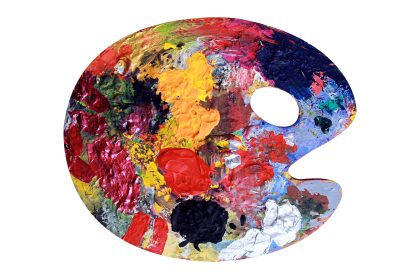
The fancy factor: a preserved idea, a moment in eternity, special knowledge
Behind the pastel colours and visible brushstrokes, and behind that woman with no eyebrows, there are two men with their own story. Without those stories, the paintings would have less meaning. The Mona Lisa would technically still be a very good oil painting, well proportioned, a good illusion of life with colours so well blended you would not see many—or even any—brush strokes.
But Sunflowers? Without knowing about van Gogh’s
Uncompromising search and lifelong struggle to capture the very essence of life, movement, light, colour and energy onto a static medium, they look strangely unfinished. There are perfect imperfections, because life itself is unfinishable and an image of sunflowers is just a recorded impression of a moment when someone—in this case van Gogh—perceived it and then did his best to share it. Knowing about van Gogh’s personality, Sunflowers and all of his other paintings convey his hardline spirit in every detail and every visible brushstroke
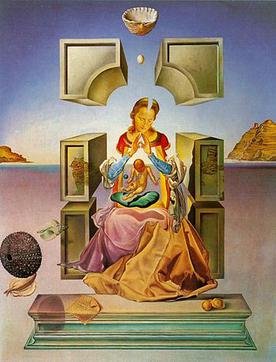
The Madonna of Port Lligat by Salvador Dalí. Oil on canvas, 1949. Source: dali-gallery
Did you know? When it comes to old paintings, we often tend to think of them as a workaround, since photography—or good, durable, shareable, affordable photography as we know it today—had not yet been invented. Leonardo knew about the basic principles of a camera obscura and maybe also about exposing coated surfaces to preserve certain light conditions. But no early photography is known of him. Just imagine anyone finding a true photograph that Leonardo himself took in 1503 that you could still look at today! It would probably outprice his paintings because it would not only rewrite the history of technology, but it would be a moment when Leonardo himself captured for eternity 500 years ago, but without pigments and a brush.
Did you know eggs also play an important role in the history of photography? Egg white-based albumen print was the first commercially exploitable method of producing a photographic print on a paper base from a negative. The quantum leap photography took from the early Daguerreotypes to albumen prints would not have been possible without eggs! As the worlds’ oldest photographic archive, the Alinari Foundation in Florence, Italy, has many of these early photos. (Link: https://www.alinari.it/en/)
Art as an investment

The very basic idea of good investments is to put something into a project and get back more out of it in future. Invest in H&N Day Old Layers (DOL) and get a great return on investment in the form of more sellable eggs, growing margins and decreasing production costs over a longer period of 100 weeks!
According to the Art Basel and UBS Global Art Market Report, the art market was worth US$67.4 billion in 2018. With this market volume and the sometimes exorbitant price rises in recent years, it is not surprising that art has become the subject of investment for many and that the market sometimes resembles a stock exchange. As a result, terms that originally came from the financial world such as blue chip can be found again and again in the art world. In stock market jargon, blue chips are shares in companies that are well-known and promise very good earning opportunities due to the company or stock market situation. Source quoted: https://artvise.me/glossar/blue-chip/
But what about art? Why invest in a coloured wood panel? Of course, there is more to it than paintings on a surface. Art experts also weigh up aspects like awareness, recognition factor, origin, uniqueness of the subject and style, condition and rarity. Also, a huge role is played by the typical style and characteristics of a painter with recurring attributable elements that are understood and admired: Hieronymus Bosch, van Gogh, Rembrandt, Picasso, Warhol, Pollock and Beuys all have a typical style. You may not even recognise some of Beuys’ works as art!

Poetry of poultry – the art of creating
The difference between art and rubbish is sometimes hard to tell, since rubbish can become art and vice versa! Indeed, rubbish is on the rise in arts since many contemporary artists create fascinating artwork out of it!
Idea and purpose can define what’s what: one difference between a Jackson Pollock and the floor at my dad’s workshop is that Jackson Pollock created his works on purpose. My dad just splattered paint on the floor without taking any further notice.
To be able to appreciate a Dadaist’s work as art, you must know that the Dada movement evolved as a reaction to World
War I. Toenjoy an artwork created in the style of Fluxus, for example, you must know that this form of performing art is experimental and focusses on the artistic process, not on the finished product.
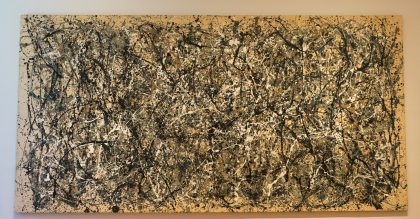
One: Number 31 by Jackson Pollock. Oil and enamel paint on canvas, 1950. Source: Legacy1995 (photographer). New York City MOMA Jackson Pollock, from www.dreamstime. com/editorial-photo-new-york-city-moma-jackson-pollock-image60692131
(Brush)stroke of Genius – the artist as artwork
Without knowing that René Magritte painted a certain artwork, its subject and style may remind you of another famous surrealist: Salvador Dali. Being perfectly aware of the technical similarities, Dali rose above the other surrealists by defining himself as the core differing element and magic ingredient:
“The only difference between me and the surrealists is that I am a surrealist!”
His public personality matched his style and helped him gain momentum. Many other artists seem inseparable from their work, until they invent themselves anew again. The great Lady Gaga is associated with stage costumes that could almost steal her show.
The reason all these artists became so famous is not just their talent alone, but the fact that they were talked about, and more and more people became aware of them and their talent. The value of their works grew with the shared knowledge about them. Communication creates value.
So, what has all this to do with layers and eggs?
Birds and eggs all look pretty much the same, although they differ greatly in terms of genetic potential and egg quality. The way to make their inert values known and meaningful is to communicate them! Talking about your work, showing how you produce them and what you do differently and better is crucial to stand out with the value you create!
Communication makes the difference between ordinary things and great things! Communication creates value.
